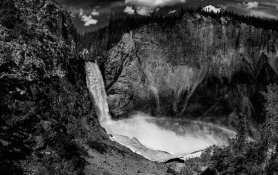I'm purely talking about resolution here, but for an Epson inkjet printer there is very little visible difference between 300ppi and 720ppi (the max the drivers use, as far as I know).
I would agree with those numbers...
However, it doesn't really come down to resolution for me, as I stated earlier. My thought exercises is a new telephone pole in the image somewhere. All one has to do is imagine the amount of tonal information that's available with a pretty good lens, with the pole being 1/4 inch wide worth of film on a 4x5. Not bad, if enlarged, let's say, to a reasonable 16x20. Plenty of shades of red and brown creosote, etc.
Of course, the obvious next step is to figure how much more tonal information is on an 8x10, where the same pole, in the same place in the image would be an inch wide. We can go back and forth about numbers, but the reality is that it is just so much more as to be not comparable at all (or whatever other cliche one wants to use).
Going the other direction, the same pole using a 6x7 would be 1/16 of an inch wide. On a 35 mm sensor/piece of film, the pole would be 1/64 of an inch wide. How much tonal information would be available then? Where are all those millions of shades of reddish brown. Especially if we are still going to 16x20. It's amazing 35mm works at all. Well, it doesn't really, at 16x20. (Just fine at 8x10 or so... ) Further, most of the digital sensors aren't even a full 35mm size. It might be more like 1/125 of an inch. It's ludicrous compared to an inch of film.
Of course, for street shooting, its terrific. Printing commercial-type contrasty, sure. However, it you are shooting the fog at dawn and want every bit of delicacy of the soft light breaking through the trees, then digital isn't going to do it. Not yet, anyway...
Lenny







